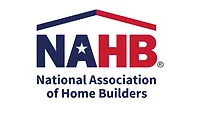Builder Confidence Nears 'Good Building Conditions' in June

Despite mixed signals about the housing market in May, builder confidence in the market for newly built, single-family homes rose four points in June to reach a level of 49 on the National Association of Home Builders (NAHB)/Wells Fargo Housing Market Index (HMI) It remains one point shy of the threshold for what is considered good building conditions.
While declines in both single- and multifamily starts pushed nationwide housing production down 6.5% in May to a seasonally adjusted annual rate of just over 1 million units, according to newly released figures from the U.S. Department of Housing and Urban Development and the U.S. Census Bureau, builder confidence has risen this month.
"After several months of little fluctuation, a four-point uptick in builder sentiment is a welcome sign and shows some renewed confidence in the industry," said Kevin Kelly, NAHB chairman, a home builder and developer from Wilmington, Del. "However, builders are facing strong headwinds, including the limited availability of labor."
"Consumers are still hesitant, and are waiting for clear signals of full-fledged economic recovery before making a home purchase," said David Crowe, NAHB chief economist. "Builders are reacting accordingly, and are moving cautiously in adding inventory."
Derived from a monthly survey that NAHB has been conducting for 30 years, the NAHB/Wells Fargo Housing Market Index gauges builder perceptions of current single-family home sales and sales expectations for the next six months as "good," "fair" or "poor." The survey also asks builders to rate traffic of prospective buyers as "high to very high," "average" or "low to very low." Scores for each component are then used to calculate a seasonally adjusted index where any number over 50 indicates that more builders view conditions as good than poor.
All three index components posted gains in June. Most notably, the component gauging current sales conditions increased six points to 54. The component gauging sales expectations in the next six months rose three points to 59 and the component measuring buyer traffic increased by three to 36.
Looking at the three-month moving averages for regional HMI scores, the South and Northeast each edged up one point to 49 and 34, respectively, while the West held steady at 47. The Midwest fell a single point to 46.
For more information, visit nahb.org.
Looking for a reprint of this article?
From high-res PDFs to custom plaques, order your copy today!






